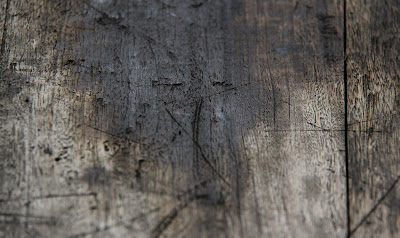I always have so many projects on the go ... restoring, painting, sourcing ... that I thought I might share a few of them with you.
Some of my projects never seem to reach a completion, so some of these 'shares' will be just a work in progress~! But as I share them, I hope to put a timeline or some level of accountability back into finishing - and so I am also hoping that this will help me turn over a few of these projects that seem to be languishing....
I love the patina of the weathered french oak of this old side table, so today's share is not about painting, but about how little or how much to do to this.
And as the table is still quite sound, I am resisting the urge to even give this a wax, as this natural old grey oak is what I love most about the piece, and it is likely to "orange" with a little oil or wax! I may do a test patch in an inconspicuous place just to see ....
I also like the unfolding the history of this piece when you start to read what it has to tell you. Beautiful mortice and tenon joints and their pinned corner show this was originally made without a nail in sight.
And the lovely traditional french metal lock for the drawer, though the key is long since lost. Underneath reveals more too: that this is very likely to have come from a chateau in the region of Normandy where I found it.
Large houses usually numbered their furniture: as you can imagine with so many rooms to take care of and maintain, it would have necessary for someone to keep track of what pieces were to go where. And so chateau furniture is likely to have markings on the underside indicating the chateau name, and numbered according to the room they were in - this one has "HB", "M_184" and "48".
Given the current patina, and this numbering, this is likely to have come from the 'working' part of a large house.
I found this in an outdoor yard of a dealer in the Normandy countryside. Left out in all seasons, and considered to have reached the end of it's life, mostly because of the large oil stain on the top.
I don't always know exactly what to do with a particular piece, and so I am hoping in the spirit of sharing that I may have some feedback in return? Some advice or ideas from you also as to what may work?
So now, what to do about that oil stain?
I have two ideas: My first is to replace the top with new french oak and have it milled to the same shape as the original. This would also remove the broken corners and the old nails, and make this a lovely stable table for many more years to come.
Problem solved? Well, .... I am left with the change in patina; regardless of how much 'weathering' the top gets it will not catch up the hundred or so years in a matter of weeks, to look like an old piece again!
A friend suggested they would leave it as it is, accept the broken corners as part of the piece and try to remove the oil stain. I have heard that methylated spirits is able to do this - it soaks into the wood and pushes out the oil to the surface, and does this without expanding and damaging the wood like water would do. Sounds tricky but something I could try.
What do you suggest? What would you do?
Jennifer
x
PS: Miss Lilly as usual wanted to be a part of the action when I take photos! I wonder what she thinks I am doing? When I tell her to move she looks away, as if by not seeing me then she can't be expected to hear me!




















































